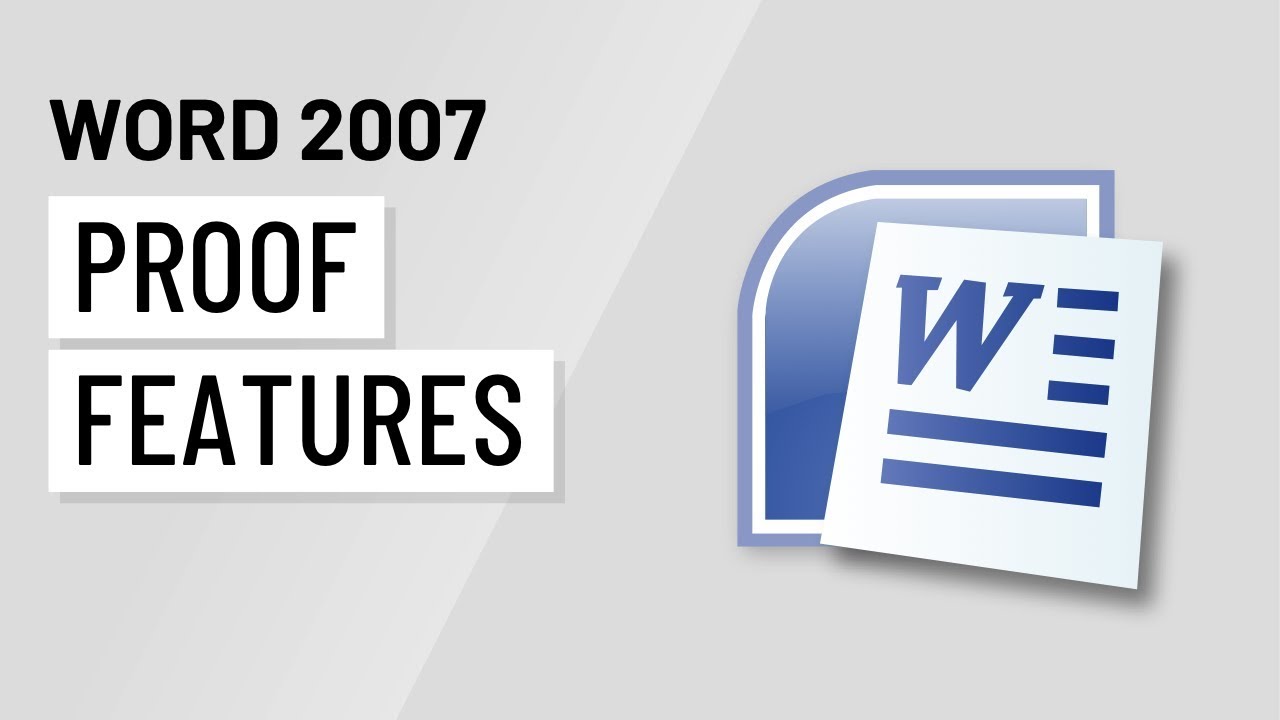
Introduction:
Microsoft Word 2007, a cornerstone of the Microsoft Office suite, introduced a myriad of features to enhance document creation and editing. Among these features, the proofing tools play a pivotal role in ensuring accuracy, clarity, and professionalism in written communication. This comprehensive guide will delve into the nuanced world of proofing features in Microsoft Word 2007, empowering users to refine their documents with precision and confidence.
I. Understanding the Need for Proofing:
- Communication Precision:
- Clear and error-free communication is paramount in written documents. Proofing tools aid in achieving precision, ensuring that documents are free of spelling, grammar, and stylistic errors.
- Professionalism and Credibility:
- Error-free documents enhance professionalism and credibility, whether in academic, business, or personal contexts. Proofing tools contribute to the overall quality of written content.
II. Spelling and Grammar Checking:
- Real-Time Checking:
- Word 2007 features real-time spelling and grammar checking, underlining potential errors as users type.
- Correcting Errors:
- Users can right-click on underlined words to access suggestions and correct spelling and grammar errors swiftly.
- Customizing Proofing Options:
- Tailor spelling and grammar checking preferences in the Word Options menu, allowing users to customize proofing features based on individual needs.
III. Contextual Spelling:
- Understanding Context:
- Contextual spelling goes beyond traditional spell-checking by considering the context of a word in a sentence, reducing the likelihood of false positives.
- Enhancing Accuracy:
- Contextual spelling enhances the accuracy of proofing, particularly in cases where a correctly spelled word may be contextually incorrect.
IV. Thesaurus and Synonyms:
- Thesaurus Integration:
- Word 2007 incorporates a thesaurus that provides synonyms and antonyms for selected words, fostering varied and expressive language use.
- Exploring Synonyms:
- Users can access synonyms through the right-click menu, exploring alternative words to refine and diversify their writing.
V. AutoCorrect Feature:
- Automated Corrections:
- The AutoCorrect feature in Word 2007 automatically corrects common typos and misspellings as users type, improving writing efficiency.
- Customizing AutoCorrect:
- Users can customize AutoCorrect settings to add specific corrections, abbreviations, or frequently used phrases.
VI. Word Count and Statistics:
- Monitoring Document Length:
- Word 2007 includes a word count feature, providing users with real-time statistics on the document’s length, paragraphs, and pages.
- Setting Word Count Goals:
- Users can set word count goals and monitor their progress, promoting adherence to document length requirements.
VII. Language Preferences:
- Setting Proofing Language:
- Specify the proofing language for a document, ensuring accurate spelling and grammar checking in multilingual or specialized content.
- Switching Languages:
- Users can switch proofing languages for specific portions of the document, accommodating diverse language requirements.
VIII. Readability Statistics:
- Analyzing Readability:
- Word 2007 provides readability statistics, including the Flesch Reading Ease and Flesch-Kincaid Grade Level, offering insights into document complexity.
- Improving Accessibility:
- Utilize readability statistics to enhance document accessibility and tailor content for specific audiences.
IX. Research and Reference Tools:
- Built-In Research Tools:
- Word 2007 integrates research tools, allowing users to access online dictionaries, encyclopedias, and other references without leaving the application.
- Inserting Citations:
- Seamlessly insert citations and references using the built-in research tools, streamlining the document creation process.
X. Track Changes and Comments:
- Document Collaboration:
- Word 2007’s Track Changes feature enables collaborative editing by highlighting additions, deletions, and modifications made by different users.
- Reviewing Comments:
- Users can add comments to specific sections of the document, fostering communication and collaboration within the editing process.
XI. Custom Dictionaries:
- Personalized Spell Checking:
- Create custom dictionaries to include industry-specific terms, names, or technical jargon, ensuring accurate spell checking for specialized content.
- Managing Custom Dictionaries:
- Word 2007 allows users to manage and edit custom dictionaries, providing flexibility in adapting proofing tools to individual needs.
XII. Accessibility Checker:
- Ensuring Document Accessibility:
- The Accessibility Checker in Word 2007 identifies potential accessibility issues, ensuring documents are inclusive and comply with accessibility standards.
- Resolving Accessibility Concerns:
- Users can address flagged accessibility concerns and optimize their documents for a broader audience.
XIII. Mastering Proofing Features:
- Continuous Learning:
- The mastery of proofing features in Word 2007 involves continuous learning and exploration of advanced functionalities.
- Professional Development:
- Stay informed about language trends, style guides, and proofreading best practices for ongoing professional development.
XIV. Conclusion:
- Elevating Document Quality:
- By harnessing the power of proofing features in Microsoft Word 2007, users can elevate the quality and precision of their written documents.
- Efficiency and Excellence:
- Integrating proofing tools into the writing process not only enhances efficiency but also contributes to achieving excellence in written communication.
As you navigate the rich landscape of proofing features in Microsoft Word 2007, you embark on a journey of refining your written expression. By embracing the diverse tools and functionalities available, you empower yourself to produce documents of exceptional quality, clarity, and professionalism.